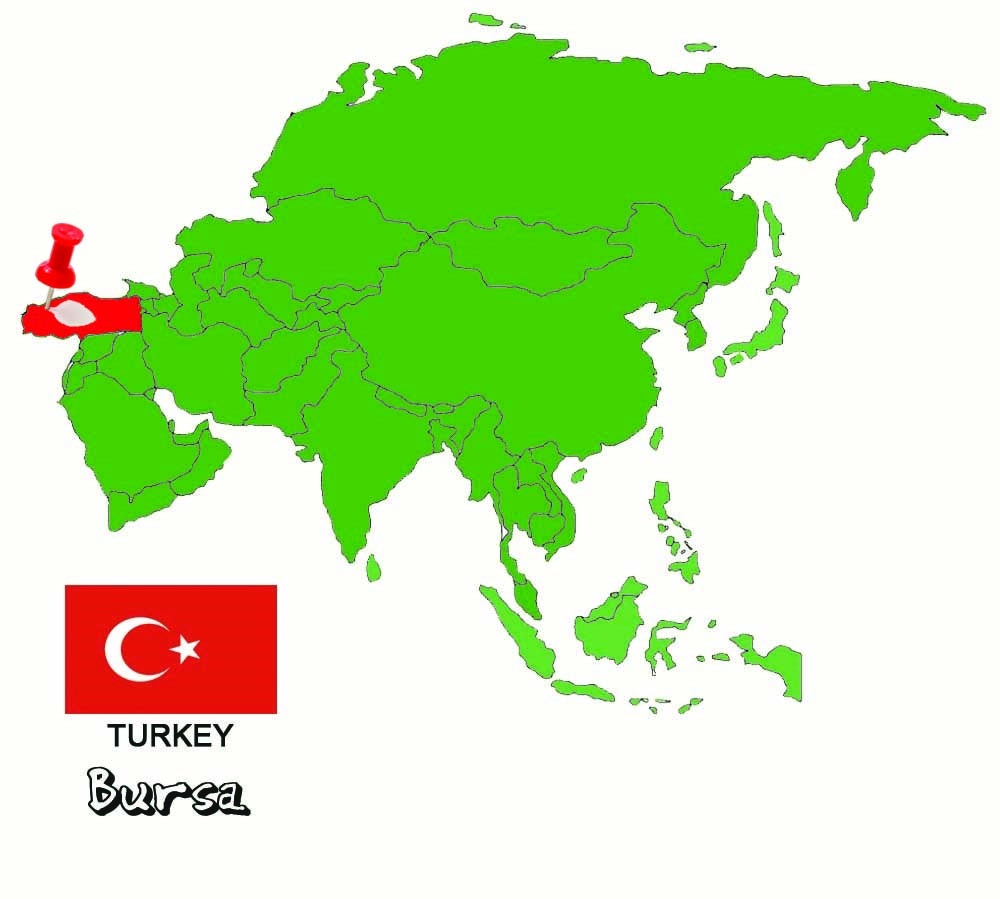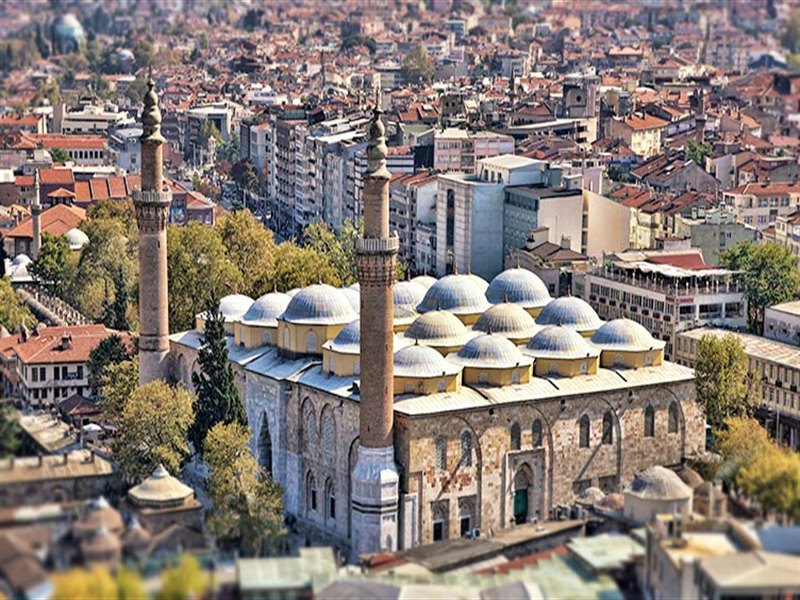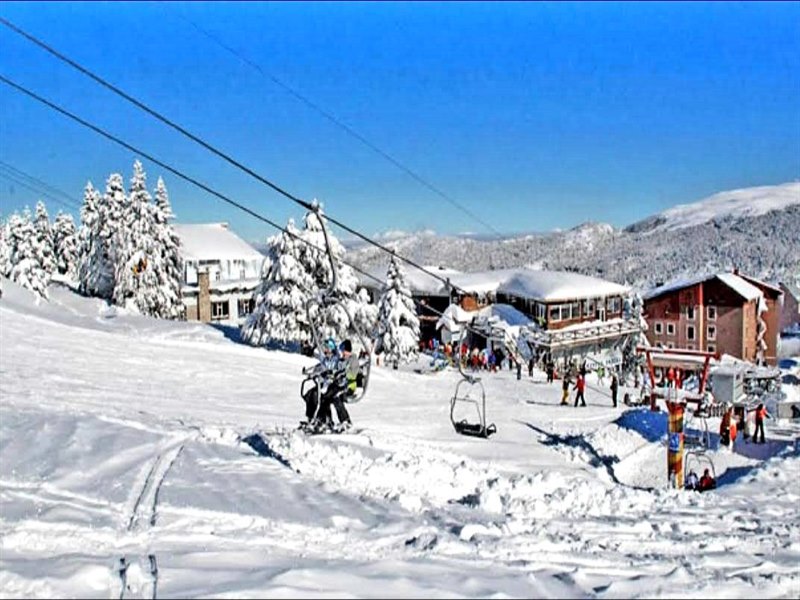
Balancing successfully between yesterday and today, Bursa has managed not to live in the shadow of Istanbul and Izmir, but to be a particularly attractive destination for anyone visiting the neighboring country. The first capital of the Ottoman Empire has the title of the cleanest city in Turkey, while attracting tourism of all kinds: cultural, sports, business, shopping, educational.
A few words about the city
Bursa is the capital of the eponymous region in northwestern Turkey and the fourth largest city in the country, with a population of 2,562,828 inhabitants. It is a very important pillar of the Turkish economy, as it is considered the heart of the country's car industry, as FIAT and Renault have their factories there. But it also has played an important role in education, since one of the largest universities in the country, Uludag University, is located there. Bursa is also known for the ski resorts of Mount Ulu, the mausoleums of the Ottoman Sultans, the fertile plain that surrounds it, its special architecture and of course its gastronomy. So I have chosen for you what I consider worthy of attention for someone visiting the city for the first time.
Ulu Cami
The Ulu Mosque (Ulu Cami) is the largest mosque in Bursa and is a typical example of early Ottoman architecture, which has borrowed elements of Seljuk architecture. It was built by Order of Sultan Bayazit I, between 1396 and 1400, by the architect Ali Neccar. It is a large and rectangular building, comprising 20 domes, which are arranged in four rows and supported by twelve columns. It is assumed that these 20 domes were built instead of the 20 mosques that Sultan Bayazit I promised for his victory in the Battle of Nicopolis in 1396. The mosque has two minarets. Inside the mosque there is a fountain, which is used by the pilgrims, while the skylight that exists in the dome directly above it, creates a peaceful illumination. The 192 monumental inscriptions by Ottoman calligraphers adorn the interior and even these have been among the best examples of Islamic calligraphy in the world. The mosque is located in the center of the Old Town, on Ataturk Avenue, and the entrance is free.

Yesil Cami
The Green Mosque (Yesil Cami), also known as the Mosque of Muhammad I, is located on the east side of the city, occupying most of the Külliye building complex. It was built between 1419 and 1421 by the architect Vezir Haci Ivaz and is a typical example of Ottoman architecture. Its name comes from the green and blue decorative tiles, which adorn its interior. After the earthquake of 1855, the building underwent an extensive renovation by the French architect Léon Parvillée, who, although managed to save the mosque, could not give it its original form, as he was not familiar with Ottoman architecture. The entrance of the mosque is flanked by recessed marble sofas, with space for shoes and above the door there is a large Arabic inscription in bronze. Under the central dome, there is a marble octagonal fountain, and on the right and left there are two vaulted recesses. The exterior spaces with the domes, now encrusted with lead, were formerly also adorned with turquoise tiles, while the carved shutters and doors of the mosque are particularly impressive. Within the building complex there is also the mausoleum of Muhammad I Tselebi, the so-called Yesil Türbe (Green Tomb).
Muradiye Camii
The third Mosque of the city is that of Murad II (Muradiye Camii) and was built in just a year (1425-1426), by an unknown architect. It belongs to the Muradiye Complex (Mosque, Park, Cemetery), giving its name to the whole region. This is the last Mosque of the Sultan built in Bursa, while unlike the previous mosques, its two domes are equally high. Its interior has several similar elements to that of Yesil Cami, since it is decorated with dark blue and turquoise colored hexagonal porcelain. One of the two minarets was demolished in the earthquake of 1855 and rebuilt in the Rococo style, after the fire in the early 18th century. A feature of the mosque is also a blue lightning, symbolizing the fact that Murat II was vanquishing his enemies like a lightning bolt. Admission is free.
Karagöz Anıtı
As most of you know, the origin of Karagiozis has always been a controversial issue between Greece and Turkey. According to the prevailing myth, however, the homeland of Karagiozis, Hatziavatis and all the other heroes of the shadow theatre is Turkey and more specifically Bursa. It is believed that its creator was Sheikh Kyusteri, who lived in Bursa and died in 1366. According to legend, Hatziavatis and Karagiozis participated in the construction of a mosque for the Sultan, the first as a janitor, and the second as a laborer. The dialogues of the two men were so amusing, that all the rest of the workmen stopped their work and watched them. When the Sultan was informed of the cause of the delay of the works, he ordered their death, but later regretted this decision, and the Sheikh Kyusteri created their figures to console him. Today the monument of the two stands in the center of Bursa.

Koza Han - Bedesten
The most important markets in Bursa are Koza Han and Bedesten. Koza Han is the traditional silk market, reflecting the traditional importance of Bursa as a center of silk production and marketing. The name Koza Han means "silk cocoon market" and is located at the back of Koza Park, in a location with many outdoor cafes. It was built in 1491 by Sultan Bayezid II, aiming to be the last stop of caravans from the Great Silk Road from China. Don't forget to get the silk scarves for which the city is famous.
Bedesten is the city's closed market and is located near the Grand Mosque. It is a rectangular building with six pillars, built by Sultan Bayezid II in 1389, with traditional Ottoman architecture. In 1958 a fire destroyed some parts, but the damage was soon repaired. Inside you will find shops of all kinds, covering a wide range of shopping from spices and food to clothes and jewelry.
Uludag Ski Center
Mount Uludağ is 36 km away south of Bursa and there is one of Turkey's favorite winter sports centers, the Uludag Ski Center. The richness of the flora and fauna of the mountain has also made it a National Park. In addition to skiing in winter, in Uludağ, summer activities such as hiking and camping are also popular. The mountain was known in ancient times as Olympus of Mysia and is mentioned in mythology as the place where the gods watched the Trojan War. The ski resort has 13 ski slopes of all difficulty levels and 15 lifts. The area has been very touristic, with more than 27 hotels, accommodating about 3000 people, shopping centers, restaurants, cafes and bars, entertainment centers and health-SPA centers.

Truva
A good excursion from Bursa is the archaeological site of the mythical city of Troy (Truva), located in northwestern Turkey, very close to the straits of the Hellespont and Chanakkale. Troy was essentially the place where the Trojan War took place, as described in Homer's Iliad. According to this, the rapture of the Queen of Sparta, the beautiful Helen by the son of the King of Troy Paris, sparked a long war, in which cities from the entire Greek territory took part. After a siege that lasted 10 years, thanks to the trick of the Trojan horse, the Greeks conquered Troy and destroyed it around 1000 BC. Many centuries later, in 1870, the German archaeologist Henry Schliemann, motivated by his love for Greek mythology, arrived in the area and began systematic excavations, which brought to light the ruins of a series of ancient cities, dating from the Bronze Age, to the Roman period. Subsequent excavations carried out by William Derpfeld and Charles Blagen proved that there were nine towns, one above the other, in this locality. In the years that followed, excavations were carried out by scientific groups of universities in the USA and in August 2003, after a magnetic survey of the plain in front of the fort, a deep moat was found, the remains of which were dated to the late Bronze Age, in the years of Homeric Troy. Although the Trojan War was disputed as a historical fact, the findings of Arrow heads found in the layers dating back to that time, speculate the existence of a battle. Excavations in Troy continue until today and the archaeological site is open to visitors nowadays. Admission costs 70 Turkish pounds, which are about 11€.
How to go
The truth is that to get directly from Thessaloniki to Bursa by air is impossible, since there are no direct flights. If you choose to go by air, you will have to change at least three planes. The most "convenient" and economical route is offered by Turkish Airlines. This is a flight to Istanbul, from there to Ankara and ending in Bursa with 321€. The ideal way to get there, however, is by car from Istanbul, since it is only two hours and twenty minutes away.
Where to stay
Bursa may be a big city, but its tourist interest is at its center, so it's a good idea not to stray too far from it. My suggestion is the Bursa Suites Apart Otel, a hotel that offers brand new rooms and studios, at low prices, and is within walking distance of most attractions.
How to move
Being Turkey's fourth largest city, Bursa has an excellent public transport system. The truth is that it is very difficult to escape from the city center, since most of the attractions are located there, but if you wish Bursa has metro, trams, buses with the general ticket costing 3.5 TL, that is about half a euro. Finally, as far as taxis, there are almost everywhere and are relatively economical. However, ask for the taximeter to be open, as defined by the law, as it is not meant for Turks, let especially if you are also tourists. Also pay attention to the routes, as their drivers are used to circling to increase the price.
What to eat
Bursa is famous for its specialty "Iskender Kebab", which is the well-known round, made from lamb meat and usually accompanied by hot tomato sauce, yogurt and pita in pieces. Inegöl Köfte is another specialty of the city and is lamb meatballs with onion without spices, grilled. Be sure to try the chestnut candies, produced from chestnut trees grown on the outskirts of Mount Oludag. Finally, here you will have the opportunity to taste the unique dessert Kemalpaşa of the Mustafakemalpafla region, a town near Bursa and these are small syrupy sweets made from local cheese and semolina.
Useful information

In Bursa we travel with a passport or a new type of Police ID, where the details are indicated in Latin characters.
In Bursa the language used is, of course, Turkish, but most people know some Greek for tourist reasons. The younger ones know English too, while everyone is willing to help if they know.
The currency of the country is the Turkish Lira (Türk lirası), and its exchange rate at the moment is 1€ = 6.31 pounds.
Many shopkeepers also accept euros.
Convert your money either to the dozens of banks that exist in the city, or to the exchange offices, which indicate the exchange rates, since they take very little commission.
Getting to and from the airport is simple, since there are continuous bus routes (number 15), which take you very soon from the city center.
In Bursa there is no Greek unpaid Consulate General, so if you need anything you should reach the nearest, located in Istanbul on hüseyinağa MH Street., Turnacıbaşı Sok. No: 22, 34435 Beyoğlu and his phone are 90 212 393 82 91.
The best time to go to Bursa is winter, so you can combine your excursion with a visit to the ski resort.
Recommended excursions → Istanbul, Eskisehir, Canakkale

If this article seemed interesting or contributed to your quality information, then you can like my facebook page: o_thessalonikios or follow me on instagram!
Mouzakidis Pantelis









